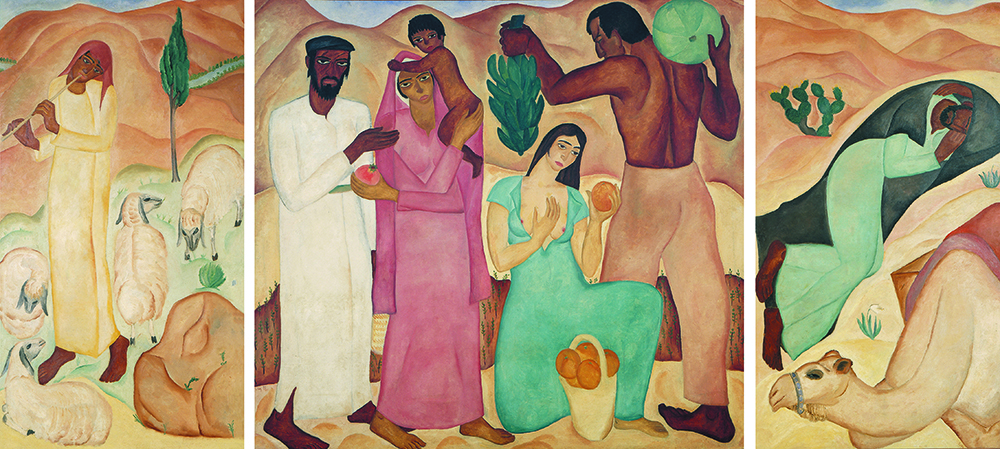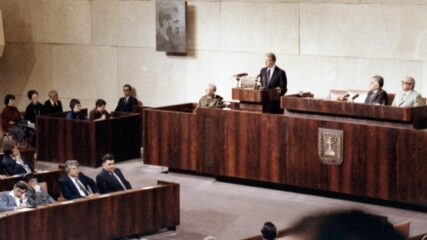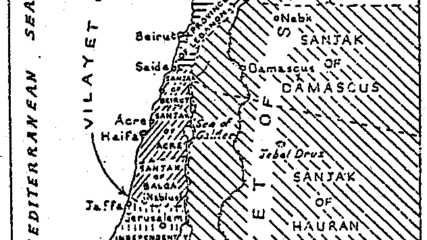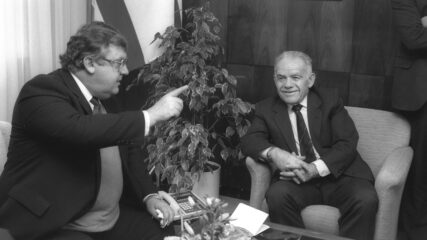Reuven Rubin (1893-1974) was a well-established artist in his native Romania when he made aliyah in the 1920s. The light and atmosphere of the Land of Israel led to a striking change in his work – from a darker, more expressive language to a lighter palette, cleaner lines and a fresh outlook. In this large triptych, oil on canvas, in the Rubin Museum collection and currently on display in the Israel Museum, two couples of the Yishuv (the area of Jewish settlement) are contrasted with each other and the occupants of the side panels. The shepherd and sleeping Bedouin seem to be one with the earth; they are grounded. The kibbutz couple, harvesting the new fruits of the land, such as bananas, contrast with the more traditional fertility of the couple on the left. At their feet are shoots, symbolic of the new growth in the land. (Image copyright the Rubin Museum, Tel Aviv)









